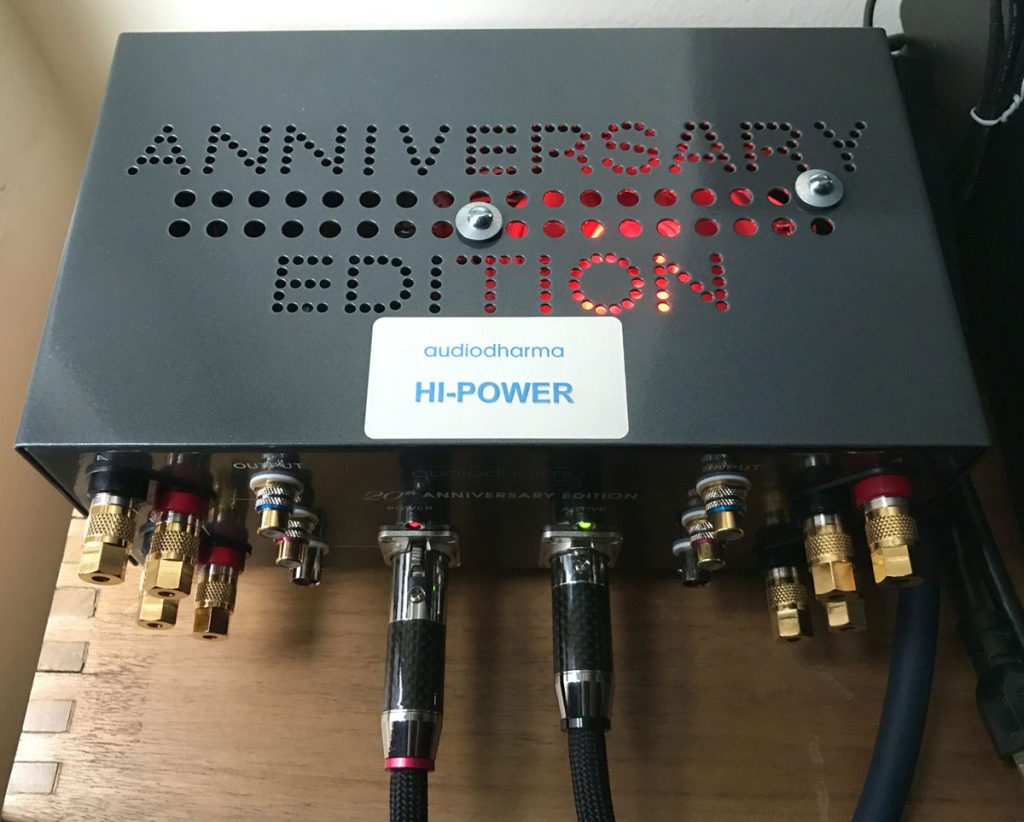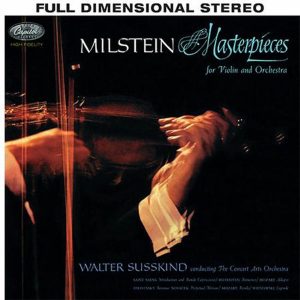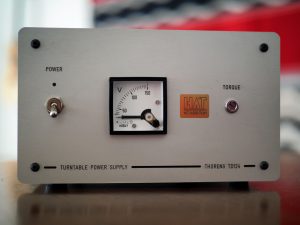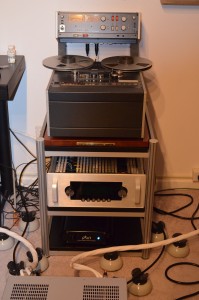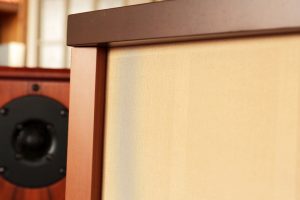Competitive upgrade, the notion of "keeping up with the Joneses," was never my thing. For whatever reason, even as our income grew, we opt to maintain the same comfortable lifestyle, rather like Warren Buffet has famously chosen to live in the same modest abode for 63 years. (We're going on 40 in our apartment. The concrete construction in use at that time happens to be ideal for audio purposes.) Our motto could be summed up as, "Live simply and travel lightly," with two glaring exceptions: indulgence in lots of live music concerts and maintenance of an extreme, two-channel, audio rig.
Over the years I've gotten playtime with many outlandish audio gizmos, a few I could not live without. The product at hand, the audiodharma Cable Cooker, has long been recognized as the best in class at what it does. So what does a Cable Cooker do? Boil spaghetti? While there are plenty of objectivists who claim it does nothing, even going so far as to deny the legitimacy of the entire subject, those with first-hand experience of the phenomenon know cable break-in is not only real, it is universal. We have the option of ignoring the naysayers.
Cooking Time
The instructions that come with the product (lightly edited below) guide you through hookup and usage but, as for the optimal time to cook a given cable, only guidelines can be given. It depends on so many design elements: the number of conductors and their gauge; the dielectric material; the complexity of the design; the quantity of metal used in the parts… the list is long. Hence, there is no "one-size fits all" conditioning time.
Generally, for brand new cable, the suggested guidelines are 2 to 2 1/2 days for interconnects… 3 to 4 1/2 days for speaker cables… and 4 to 5 days for power cabling.
Periodic cooking-and-listening tests are essential to determine the optimal conditioning time for each design. For instance, if you cook a new interconnect for 24 hours, listen to it briefly, then give it another 6 to 8 hours on the Cooker. Repeat this cycle of cooking and listening until you find little or no improvement from the previous test. At that point the cable is probably fully conditioned. Cables that have been in a system for quite some time can improve greatly with a 24 to 36 hour recharge on the Cooker… with speaker cables and power cables, sometimes a bit more… A"periodic recharge" of a system's cabling every 3 or 4 months insures that a system will be at its optimum performance level… Conditioning is not a one-time phenomenon.
Those are the words of Alan Kafton, proprietor of audiodharma, the company that makes the Cable Cooker. Alan elaborated:
One thing I do want to emphasize....the primary raison d'etre for owning a Cable Cooker is to perform the recommended "recharges," so that one may maintain a high level of system performance over many years. It's not just for brand-new cables, a point that many audiophiles are not aware of.
Cables also need to settle in after a bout of cooking. This settling period could take 20 minutes to several hours with a music signal—another variable. (These considerations apply to any burn-in/conditioning device.)
Let's do a simple A/B. I took a pair of Audience frontRow XLR interconnects that I've been using for about three months and topped off one of them with a 24 hour cycle on the CC. (FYI: I learned that Audience owns a couple of Cable Cookers and gives all of their top-line cables a 60 hour cycle prior to shipping.) A cable that has been used for that length of time is ready for another short bout with the CC.
I plucked Beethoven Romances from my rotation pile (ONYX 4101). I bought this CD because it features violinist Augustin Dumay. We first heard him at the Ottawa Chamberfest a couple of years ago and ever since I've been on the lookout. The man's sensibility harkens back to a turn-of-the-century Western European aesthetic through an illustrious lineage that includes Joseph Szigeti, Mischa Elman, and Nathan Milstein—the Mt. Rushmore of Old World style.
I hit Play and…
Well, this is not at all what I was expecting. From what I read online, I assumed the CC would do what most third-party audio accessories are advertised to do: make chair scrapes and page turns more obvious, clarify hall echoes, goose dynamic range, etc. Instead, my attention was drawn to tone and PRAT. Dumay's violin took on a warm, woody tone; his expression became more lyrical. And the entrances and exits of the ensemble of musicians were tighter, as if they had more rehearsal time.
The Evolution of Nathan Milstein
Intrigued by the nicely turned violin tone, I pulled out the famous Milstein Masterpieces (Analogue Productions reissue, SACD CAPC 8528 SA). I'm a sucker for these legendary violinists, but that doesn't mean their legacy recordings have great sound—on the contrary. The soloist is always upfront and center, larger than life, and exceedingly dynamic. He stands naked before you, totally exposed, so you get to delight in lots of little flourishes and details you wouldn't hear if this were live. However, given the dynamics of a modern Hi-fi, it causes a problem. When a forte comes along in the violins' top range, it is almost guaranteed to degrade into a fingernails-on-chalkboard screech. Any Golden Age recording featuring Heifetz will serve to demonstrate the issue.
Now, with the cooked frontRow IC in line, the orchestra spreads out and becomes more spacious on Saint-Saens Introduction And Rondo Capriccioso. There's a bit more punch on the bottom and, sure enough, Milstein's top notes are tamed somewhat, the treble is less aggressive than with the uncooked cable.
The cooked XLR IC went back for another bout of 12 hours on the CC, bringing it up to 36 hours. In the next A/B, I noticed more of the same—less harshness on top notes, and the presentation was becoming more relaxed. I gave it another dose for 14 hours, bringing the total up to 50. Huh—what happened? The sound lost its warmth, the shrillness was worse, and all gains were reversed. I had over-cooked it. Fortunately, over-cooking does no damage and is easily remedied by playing a music signal. After six hours with Qobuz, I checked it out. The benefits returned in full, Milstein sounded great—so intense, colorful, so fluid.
You may have noticed that I'm not strictly adhering to the cooking time instructions. I didn't want the Cooker active when I was critically listening because the darn wall-wart adversely impacted the sound, closing down the treble, reducing bloom, and making it less acoustic sounding. (The CC itself only had a minor impact.) So I worked in cooking time as it became convenient.
Next, the 2m run from preamp to amps gets 24 hours
I liked what I heard a great deal and was digging this whole process after treating only one interconnect! Next I gave the 2m frontRow interconnect from preamp to my amps 24 hours. Yeah, very relaxed now, more of the same. And so it continued, each measured dose of cooking time moved the sound in a positive direction (just be careful about over-cooking).
By now I had a good feel for what the Cooker was doing, at least with the frontRow XLR interconnects. The unconditioned cable's treble seemed exposed and a bit raw; the midrange kind of tight. It was as if there was a belt around each of these bands, pinching them. Cooking loosened the belts, gave the midrange added flesh, the bass got some too, and the treble was better integrated. Meanwhile, the tonal temperature became slightly warmer (still not loose, however). The Cooker was smoothing the frequency response, making it more linear and acoustic sounding.
The funny thing is I consider the frontRow to have abundant midrange. After cooking, it had more and the sound improved. This outcome surprised me.
The CH Precision Reference Balanced Link
Time to try another cable brand. I chose two runs of CH Precision Reference Balanced Link interconnect, because its design and materials couldn't be more different. Where the frontRow uses pure copper conductors in a shielded twin axial geometry with PTFE Teflon dielectrics, the CH Ref employs pure silver conductor strands interlaced with damping cotton fibers and the dielectric is mostly air supported by a fiber structure. Most importantly, the CH Ref is unshielded. (Note: the CH Ref wires are now discontinued.)
The Sound of Silver
Silver conductors are known for a beguiling upper midrange/lower treble band, which is often prominent. Some people refer to this as "the silver sheen." Typically, these wires have a weak low-end.
I prepped a length of CH Ref on the FM tuner for a week. Its compatriot went on the Cooker for 42 hours. Reacquaintance with that sweet upper midrange/lower treble of the burned-in, but uncooked, CH Ref immediately brought a smile. When I swapped in its compatriot—my grin broadened. Cooking gave the midrange (and bass, to a lesser degree) more heft, while integrating the treble. Of course, this was no different from its effect on the Audience frontRow ICs.
Power Cords in Play
Moving on to power cords, I gave an AudioQuest Dragon PC four days on the Cooker before putting it on my preamp. I followed with an Audience frontRow power cord for four days on the Cooker and swapped it onto my DAC. The changes were not surprising in either case. Throughout these comparisons of brands and types of cables, the impact of the Cooker was consistent.
Secondary affects were all positive and cumulative. As additional cooked cables were incorporated into the system, Milstein's instrument was gradually transformed. An amazing repertory of color, texture, and detail surfaced that made each note slightly different, and he shaped them into little vignettes to tell a story. My ears were tickled, my attention rapt: In short, I was seduced. This is the difference between players who are technically proficient, but have nothing to say, and a raconteur sharing entertaining stories. Few play like this anymore.
Cosmetics and Design
There are four CC models in production, ranging from $1079 to $1949. All come with: one outboard universal switching power supply; one set of power cable break-in adaptors (US-style for US customers); one power cable extension adaptor (for daisy-chaining US-style power cables); 3 pairs of RCA connectors (for daisy-chaining RCA interconnects). As you go up, each model has more features. (Those interested can link to a Model Comparison chart.) I was sent the latest, greatest, Anniversary Edition HI-POWER Premium Plus version.
On the back (or front, depending on your point of reference), there's a couple of rocker switches, including power on and the input plug for the wall-wart's DC cable. On the verso side, there's a red POWER diode. A green ACTIVE diode next to it plays games with you, i.e., blinking at irregular intervals, going off momentarily and coming back on, getting brighter, then dimming. Alan emailed what's actually happening here:
The "blinking at irregular intervals" is the frequency sweep circuitry displaying its asymmetrical pattern (via the green LED) as the sweep travels from 0Hz to just over 40KHz, and back. Adding multiple harmonics, the sweep reaches into the megahertz range. The sweep covers this territory hundreds of times per second. Additionally, the sweep portion of the steady-state output signal is delivered with high current and high voltage, greater in the HI-POWER model that you've been using.
Various high-grade connectors densely pack this side for all the types of wires that can be conditioned (see the FAQ page). Optional adaptors expand it to many more.
Conclusion
I had long been of the opinion that playtime with music is the best burn-in process for any cable. I'm quite sure now that ain't true. It's a good second, certainly better than what you'll hear from a cable fresh out of the box, but my ears tell me it doesn't finish the job. For proof of that assertion, take a cable that you've been using for months, give it some time on the audiodharma Cable Cooker, then listen and hear for your self.
Given adequate time on the Cooker, a cable comes out of the process with a flatter, more linear frequency response, and a more acoustic sound. In the samples I put through the process, that meant more midband, to a lesser degree more bass, and a wayward treble brought into the fold. This was the overt impact. A host of secondary areas benefited, i.e., smoother dynamic transitions, improved definition, and tone color. The audiodharma Cable Cooker is demonstrably excellent at what it does and the results are very natural sounding.
I know several audiophiles who forked out thousands for the latest generation of LP cleaning machines, who don't own Cookers. The difference a thorough cleaning makes is no joke. In an analogous manner, Cooking will extract a level of performance from your cables you haven't heard yet. It's just waiting for you to unleash it.
audiodharma Cable Cooker
Customer-direct Pricing
Anniversary Edition Classic, $1079
Anniversary Edition Premium, $1279
Anniversary Edition Premium Plus, $1549
Anniversary Edition HI-POWER Premium Plus, $1949
audio excellence az






